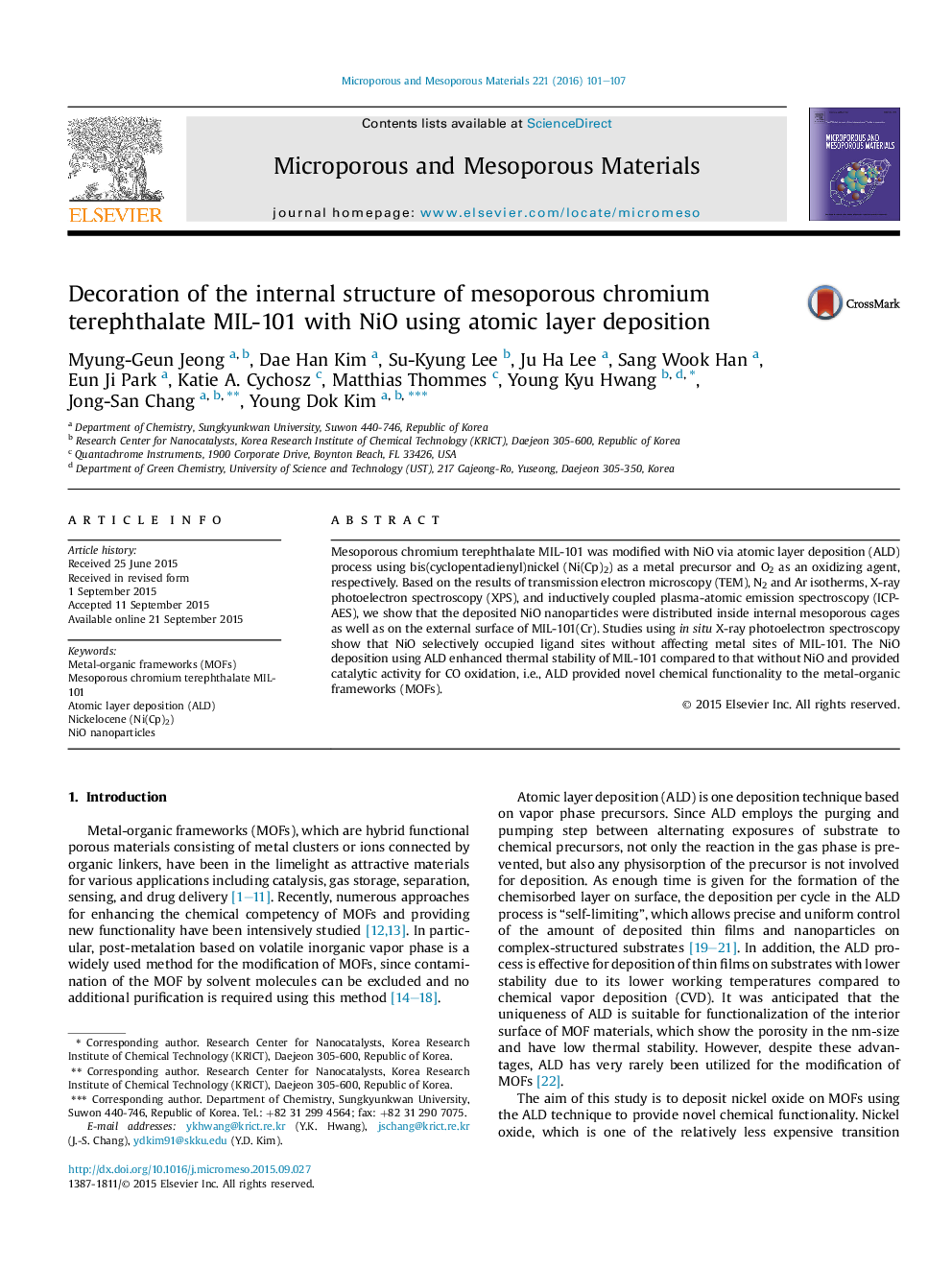| Article ID | Journal | Published Year | Pages | File Type |
|---|---|---|---|---|
| 72318 | Microporous and Mesoporous Materials | 2016 | 7 Pages |
•NiO was successfully deposited in porous chromium terephthalate MIL-101 using the ALD process.•The deposited NiO nanoparticles were distributed inside internal cages as well as on the external surface of MIL-101.•Studies using XPS provide evidence that NiO selectively occupied ligand sites without affecting metal sites.•NiO deposition using ALD enhanced thermal stability of MIL-101 and provided catalytic activity for CO oxidation.
Mesoporous chromium terephthalate MIL-101 was modified with NiO via atomic layer deposition (ALD) process using bis(cyclopentadienyl)nickel (Ni(Cp)2) as a metal precursor and O2 as an oxidizing agent, respectively. Based on the results of transmission electron microscopy (TEM), N2 and Ar isotherms, X-ray photoelectron spectroscopy (XPS), and inductively coupled plasma-atomic emission spectroscopy (ICP-AES), we show that the deposited NiO nanoparticles were distributed inside internal mesoporous cages as well as on the external surface of MIL-101(Cr). Studies using in situ X-ray photoelectron spectroscopy show that NiO selectively occupied ligand sites without affecting metal sites of MIL-101. The NiO deposition using ALD enhanced thermal stability of MIL-101 compared to that without NiO and provided catalytic activity for CO oxidation, i.e., ALD provided novel chemical functionality to the metal-organic frameworks (MOFs).
Graphical abstractFigure optionsDownload full-size imageDownload as PowerPoint slide
